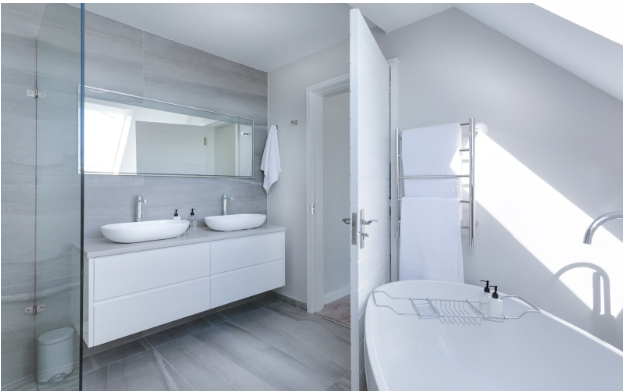After spending more time in the house for your day-to-day activities, you may have noticed that some areas of your home could use a little updating. Whether it’s the outdated kitchen or the cramped bathroom, a home remodeling project can breathe new life into your living space and add value to your property. However, such a project can be daunting and overwhelming for many homeowners. Proper planning is crucial to ensure a successful and stress-free remodel.

Assess the Project Scope
Before embarking on a home remodeling project, it’s crucial to evaluate the scope of the work required. This involves clearly defining your goals, setting a realistic budget, and establishing a timeline for completion. Additionally, it’s important to anticipate potential challenges, such as structural issues or the need for permits for specific renovations.
When setting your goals, consider the purpose of your remodel and the outcomes you wish to achieve. Examples include:
- Improving functionality and layout of a specific room
- Updating outdated features for a more modern look and feel
- Increasing energy efficiency with new appliances or fixtures
At this stage, it’s crucial to assess your priorities. While you might dream of renovating your home, budget and time limitations often necessitate focusing on specific areas or projects. In such cases, starting with high-traffic spaces like kitchens and bathrooms is wise, as they generally offer the highest return on investment.
Hire a Professional Contractor
A qualified contractor brings expertise, experience, and access to a network of reliable subcontractors and suppliers, which can save you time and effort. When selecting a contractor, doing thorough research, reading reviews, and asking for references is essential. This ensures you choose someone reputable and capable of handling the scope of your project.
A professional contractor can expertly navigate the complexities of obtaining permits and complying with local building codes—a labyrinthine process for many homeowners. By choosing experienced professionals specializing in Bathtub Refinishing in Tampa, you ensure that every detail of your project is managed with precision and expertise. Moreover, a professional contractor can provide valuable insights and suggestions, helping you make informed decisions based on their extensive experience.
Research and Gather Inspiration
You’ll want to find inspiration for your new space, and there’s no shortage of sources for home remodeling ideas. From social media platforms like Pinterest and Instagram to design magazines and home improvement shows, there are countless resources to help you discover your style preferences. It’s also essential to extensively research different materials, finishes, and fixtures that suit your goals and budget.

When making your selections, keep in mind factors such as durability, maintenance requirements, and energy efficiency. It’s also wise to involve your contractor in the decision-making process during this stage. They can provide valuable input and recommendations based on their experience and knowledge of industry trends.
Plan for the Unexpected
Despite your best efforts to plan every detail of your remodeling project, unexpected issues often arise. Preparing for these unforeseen circumstances can minimize stress and keep your project on track. Here are several steps to ensure you’re well-prepared:
- Set aside a contingency budget: It’s wise to set aside an additional 10-20% of your total budget for unexpected costs that may arise.
- Prioritize your goals: If you have budget or time limitations, have a list of “must-haves” and “nice-to-haves” to guide your decision-making.
- Have a temporary living arrangement: Depending on the scope of your project, you might need to find temporary housing during construction. This can help minimize disruptions and keep you away from potential hazards.
- Communicate with your contractor: Regular communication is key in promptly addressing any issues and avoiding delays. Keep an open line of communication throughout the project to stay updated on progress and address any concerns.
Create a Design Plan
Collaborate with your contractor and potentially an interior designer to create a detailed design plan. This plan should include floor plans, 3D renderings, and a comprehensive list of materials and finishes. A well-thought-out design plan will help ensure that all aspects of your remodel align with your vision and goals while staying within your budget. Additionally, having a clear design plan can streamline the construction process, as it minimizes misunderstandings and ensures that everyone involved is on the same page.
Once your design plan is finalized, it’s time to select the materials and fixtures for your project. Make sure to choose high-quality materials that not only meet your aesthetic preferences but also withstand the test of time. Visit showrooms, request samples, and consult with your contractor for recommendations on the best options available. Remember that specific trends may come and go, so it’s essential to balance trendy designs and timeless appeal.
Choose Materials and Finishes
Materials and finishes play a significant role in your remodeled space’s overall look and functionality. Every element contributes to the final outcome, from flooring and countertops to lighting and hardware. Consider the following factors when making your selections:
- Durability: For high-traffic areas like kitchens or bathrooms, choosing durable materials that can withstand daily use is essential.
- Maintenance: Consider how much time and effort you will put into maintaining your chosen materials. For example, natural stone requires more maintenance than porcelain tiles.
- Style: Your materials should align with your design plan and aesthetic preferences.
Mix materials and finishes to add visual interest and dimension to your space. However, make sure they complement each other and create a cohesive look.
Prepare for Construction
As your project moves into the construction phase, preparing your home and family for any disruptions is crucial. This could include relocating to a temporary living space or setting boundaries with construction zones to contain dust and debris. Communicate these preparations with your contractor beforehand so they can plan accordingly.
It’s also essential to have a clear timeline in place and set realistic expectations for the completion of your project. Understand that unexpected delays may occur, but open communication with your contractor can help avoid misunderstandings and ensure the project stays on track.
Planning a home remodeling project can be daunting, but with proper preparation and research, it can also be an exciting and rewarding experience. Remember to evaluate the scope of your project, hire a professional contractor, gather inspiration, plan for the unexpected, create a design plan, and prepare for construction. By following these steps and keeping open communication with your contractor, you’ll be on your way to transforming your living space into your dream home.






